#whatisSTEM
Text

What is STEM?
In the Senior High School (SHS) education, "STEM" stands for or refers to a set of academic subject that focuses particularly in "Science, Technology, Engineering, and Mathematics." It is an academic track or strand that focuses on these specific subjects to prepare students for careers in science, technology, engineering, or mathematics-related fields. It's a specialized educational program aimed at giving and providing students a strong foundation in these fields. It's a way of organizing and categorizing educational programs to help students develop skills and knowledge in these disciplines. This strand can help them in their college degrees in the near future since stem strand is in senior high school department it is only a two year program.
The Science, Technology, Engineering, and Mathematics (STEM) strand is one of the four strands available for senior high school in the Philippines. Students are free to choose their SHS track in the Philippines. Some may already choose something to prepare them for their college degree and future employment. Other students use SHS as an avenue to explore different subject matters and broaden their knowledge. The STEM strand in SHS is an inquiry and research-based program. It exposes students to more complex mathematics and science concepts and aims to serve as a foundation for their future college degrees.
Advantages of Taking STEM Strand.
The STEM strand encompasses many subject matters compared with other SHS strands. Because of this, the students are presented with many concepts and ideas that they can apply to their daily life as well as in their future studies.
SKILLS NEEDED IN STEM STRAND.
Critical Thinking
Being successful in STEM not only depends on the ability to think critically but also to apply concepts to solve a problem. To find solutions to problems, students must use their critical thinking skills. In STEM, this is much more than solving word problems
Problem-Solving
The notion of modern skills is what binds the STEM movement together. A skill that every student needs is the ability to problem-solve. Everybody will face problems every day, but some may be more complex than others, like doing taxes. Employers and society need problem solvers because it’s one of the types of skills that matter. Most STEM professionals may not directly use advanced mathematics like calculus taught in school, but the way it teaches people how to problem solve is significant.
Math & Science Skills
The mathematics and science skills you are learning in school are the foundation of STEM and must be applied in pursuit of solutions. The math and science used to solve problems will connect to and extend your coursework, as well as highlight connections between ideas and subject areas.
Collaboration
Big challenges are rarely solved by individuals. Working on STEM problems also involves learning to work as a productive part of a collaborative team. these skills will help students who want to take stem, it will help them so that they will not have difficulty in taking stem strand because stem students are studying different mathematical equations related to the field of engineering and architecture, critical thinking, mathematical and science skills are necessary because this strand specializes in the subject of pre-calculus and it also has earth and life sciences. Collaboration is necessary in this strand because performance tasks are often done in groups, especially communication and research in Filipino language and culture, oral communication, understanding culture, society and politics and English for academics and professional purposes.
STEM can offer several new skills to obtain. By learning about STEM skills, you can improve your abilities and use them to find job prospects in related fields. In this article, we discuss STEM skills, including some common examples, how you can develop these skills and how to highlight them during a job search.

What is the Purpose of Stem strand?
The goal or purpose of the STEM (Science, Technology, Engineering, and Mathematics) strand in education is to provide students with a strong foundation in these related fields. It aims to prepare students for careers and further education in areas related to science, technology, engineering, and mathematics. This strand often focuses on developing critical thinking, problem-solving skills, and a deep understanding of these subjects, which are essential in today's increasingly technology-driven world. It also seeks to promote innovation, creativity, and a strong analytical mindset in students. Ultimately, the goal is to equip students with the knowledge and skills needed to excel in STEM-related professions and contribute to advancements in these fields.
Conclusion.
In my conclusion, this strand is one of the best strands to choose because here you can develop different skills that will help you in future careers such as nursing, civil engineering and BS Psychology. In this strand, your talents will be honed in various subjects, especially in math and science. you can develop your mathematical skills and technology skills here. This is also where you can develop multitasking and you will undergo a lot of pressure but it is a preparation for us in college so that we will not be shocked badly in college because the pressure is greater in college. this strand is one of the most difficult strands but it is one of the most effective strands to increase your knowledge and skills that you can use and support in your journey in the future.
FIRST SEMESTER
CORE SUBJECTS
•Oral Communication in Context
•Komunikasyon at Pananaliksik sa Wika at Kulturang Pilipino
•General Mathematics
•Physical Education and Health (P.E) 1
•Earth Science
•Personal Development
APPLIED AND SPECIALIZED SUBJECTS
•Empowerment Technologies (E-Tech) ICT for Professionals
•Pre-Calculus
•General Chemistry 1
SECOND SEMESTER
CORE SUBJECTS
•Reading and Writing skills
•Pagbasa at Pagsusuri ng ibat ibang Teksto sa Pananaliksik
•Statistics and Probability
•Disaster Readiness and Risk Reduction
•Physical Education and Health (P.E) 2
•21st Century Literature from the Philippines and the World
APPLIED AND SPECIALIZED SUBJECTS
•Practical Research
•Basic Calculus
•General Biology 1

References:
https://www.indeed.com/career-advice/resumes-cover-letters/stem-skills
https://www.teacherph.com/list-specialized-subjects-stem-strand/
https://stem.getintoenergy.com/stem-skills-list/
https://reedleyschool.edu.ph/blog/overview-of-stem-strand-and-curriculum/
https://stemcadia.com/stem-skills/
https://www.bataannationalhighschoolshs.com/stem
#Whatisstem#Stem#Stemstrand#senior high school#Stem students#E-tech#Importance of Stem#Stem is the best
4 notes
·
View notes
Text
What is STEM?
STEM (science, technology, engineering, and mathematics)
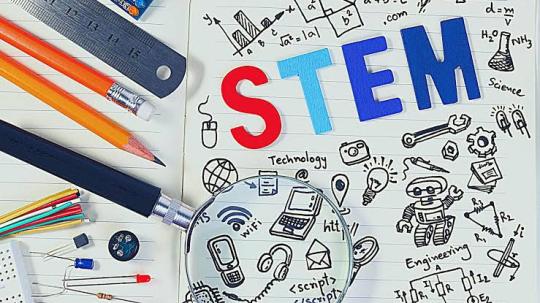
The term STEM (Science, Technology, Engineering and Mathematics) is an acronym used by those relevant to the educational method concerning the fields of Science, Technology, Engineering and Mathematics. This term was first used in 2011 by the biologist Judith A. Ramaley, who as head of the Natural Science Institution of the U.S.A., was in charge of developing new educational programs. STEM is an educational approach designed to combine technology and engineering along with science and mathematics, which are vital in order to understand the laws of the universe. The University of Colombia stated that the basic question to be answered is “How can we give such a meaning to education so that children would want to remain at school, improve their performance and graduate high school with the proper knowledge in order to start their academic education and enter working market?”
This means that it is now more than ever essential for all governments to invest in this pioneering initiative. Throughout Europe, countries that aim to develop their industry, try to induct STEM in their education systems. To this direction, in 2009 begun an effort in the European school network, based in Brussels, so that some of the schools would develop pilot activities and technologies in the classroom, exploring the use of educational material in teaching STEM. Stem education is an attempt to evolve from the tutor-centered approach into a teaching method that involves problem solving, creative initiative, research and hands-on activities. STEM offers a chance for children to develop their abilities encouraging then to answer questions and get involved with fun activities based on science, mathematics, engineering and technology. It is truly impressive how the children react to this method, as they seem to find it more interesting and appealing. By applying STEM through various projects, students learn to process facts and focus on solving problems and gain abilities fitting to global education, develop critical thinking and work in a team, while it has also been reported that the knowledge gap between children from different countries has significantly been decreased. In this philosophy, a new project was born, called “ STEM on the road” aiming to initiate social awareness and ensure everyone’s involvement in achieving real increase in children’s performance in science, technology, engineering and mathematics.
STEM Education is an Organization of Educational Robotics, Science, Technology & Mathematics. Since 2015 it has been developing STEM programs and Educational Robotics for all levels of education. For Kindergarten children up to teachers, there are STEM programs inspired by the best universities in world leaders in this field, such as MIT, California Institute of Technology, Rose-Hulman Institute of Technology, etc.
But why is STEM so important to us? STEM is an educational methodology, which was essentially developed to promote knowledge and skills, which are lacking in analytical study programs. The so-called 7Cs Skills of the 21st century, are abilities and skills which are necessary for a human being future. Imagine how many new professions there will be in 20 years from now on and how different the world and its socials will be Needs. If we believe that our job as educators is primarily to we prepare students for a successful and fulfilling future, we should give opportunities to our students to strengthen these skills.
by stem.edu.gr
1 note
·
View note
Text
What is STEM?
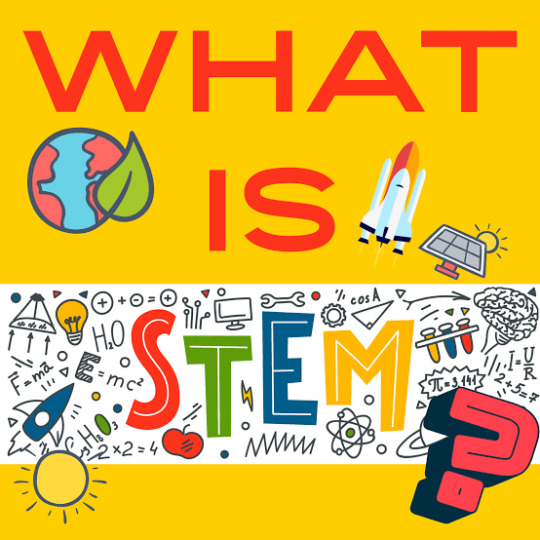
The acronym STEM, which stands for Science, Technology, Engineering, and Mathematics, is one of the options accessible to students in the Philippines who are allowed to select their SHS journey. It aims to prepare students for a variety of professions, including engineering and academic research as well as careers requiring computational skills and mathematics. Additionally, it is made to help students in senior year develop their curiosity, problem-solving capabilities, and communication ability.
According to the U.S. Bureau of Labor Statistics, some students may already have chosen an option that will help them get ready for their careers in the future and college degrees. Some people are inspired to pursue STEM fields because they genuinely want to learn about natural phenomena, solve complex problems, or develop innovative solutions, while others are motivated by the prospect of having an exciting and lucrative career in engineering and technology. Where in, more students are choosing STEM degrees as of 2023 because these in-demand professions offer job security, high earnings, and opportunities for promotion. Of them, 63%, or over two thirds, pick STEM.
The reasons given by students who do not want to study STEM are that:
a. ) The disciplines are hard or convoluted
b.) They are unrelated to the job path they want to take.
c.) They are not strong at math and computations.
Along with providing students with specialized technical knowledge, STEM education places a strong emphasis on the growth of cooperation, critical thinking, and flexibility. In another area, students who participate in STEM activities may experience a range of emotions, including excitement and curiosity, frustration and sadness, confidence and empowerment, or inspiration and enjoyment. However, learning experiences may boost students' confidence and self-esteem as they successfully overcome obstacles and pick up new skills.
To successfully establish the STEM strand, here is a list of specialized subjects in the Science, Technology, Engineering, and Mathematics (STEM) strand.
CORE SUBJECT:
• Oral Communication
• Komunikasyon at Pananaliksik sa Wika at Kulturang Pilipino
• General Mathematics
• Statistics & Probability
• Philosophy
• Physical Education & Health
• Disaster Readiness and Risk Reduction
• Understanding Culture, Society, and Politics
SPECIALIZED SUBJECT:
• Pre & Basic Calculus
• General Chemistry
• General Physics
• General Biology
• Research Project
CONTEXTUALIZED SUBJECT
• Empowerment Technologies
• Practical Research
• English for Academic and Professional Purposes
• Entrepreneurship
Compared to other SHS strands, the STEM strand includes a wide range of subjects. The students are thus exposed to an abundance of concepts and ideas that they can apply to their daily life as well as in their future studies. With that, Here are the benefits of learning STEM education after graduating with this strand, according to Transizion.
1. Growing Career Field
This means that in addition to earning a respectable wage, you'll also probably have an easier time getting work.
2. Ability to impact society using your stem degree
Individuals led by professionals in STEM fields frequently advance computer technology or produce ground-breaking medical breakthroughs.
3. Flexibility
STEM majors open up a variety of job choices, from computer science to engineering. STEM majors can switch occupations with ease since these skills, which are based in arithmetic and problem-solving, are adaptable.
4. Diversity
As a result, women and people of other racial and cultural backgrounds have more opportunity to pursue STEM degrees, and STEM graduates benefit from a rich and diverse environment for employment and education.
The STEM strand opens up a variety of options for SHS students in the Philippines, enabling them to enroll in programs including engineering, technology-related fields, and medical sciences. Students develop key problem-solving abilities that are crucial for what lies ahead in education through in-depth classes and assignments. Students' perspectives in the dynamic disciplines of science, technology, engineering, and mathematics are expanded by this strand, which serves as a foundational stepping stone.
REFERENCE:
1 note
·
View note
Text
What is STEM
Science, Technology, Engineering and Mathematics is an educational program to prepare secondary learners or Senior High School students that will pursue careers in the field of Science Technology and Engineering. STEM education focuses on educating future generations for successful jobs in science, technology, engineering, and mathematics (STEM). STEM education provides children with skills that expand beyond those required for success in STEM careers, preparing them to enter any industry with valuable skill sets that enable them to achieve their goals. Stem aims to develop Logical Reasoning, Collaboration Skills and Critical Thinking. Science
The first component of STEM is Science, science is an exacting, systematic study that develops and organizes information in the form of verifiable explanations and global forecasts.
Technology, Technology, sometimes referred to as the transformation and manipulation of the human environment, is the application of scientific knowledge to the practical goals of human life.The growth of technology, which transforms communication, transportation, healthcare, and other aspects of contemporary life, relies on computer science, information technology, software development, and engineering.
Engineering, Engineering is the profession of solving technological issues, increasing efficiency and manufacture, and improving systems by utilizing natural science, mathematics, and the engineering design process Many subfields of modern engineering exist, including the design and improvement of infrastructure, machines, automobiles, electronics, materials, and energy systems.
Mathematics, Mathematics is a field of knowledge that covers the subjects of numbers, formulas, and associated structures, shapes and the places in which they exist, and quantities and their variations. Mathematics has significance to the natural sciences, engineering, medicine, finance, computer science, and social sciences. Although mathematics is often used to model phenomena, its essential principles are independent of any scientific experimentation.
The analytical, problem-solving, and critical thinking abilities that STEM education teaches students are applicable to a wide range of vocations. Additionally, it encourages invention and creativity, both of which are crucial for tackling the most important issues facing society. Students that pursue a STEM education have a wide range of options to participate in STEM-related activities. These tasks could involve inventing and testing novel materials, constructing and building robots, writing computer programs, and doing in-depth data analysis.
To summarize, STEM programs are comprehensive multidisciplinary topics that can be learned by students of all ages. STEM fields are powerful forces of invention and development, resulting in cutting-edge technology and developments that improve our daily lives. STEM education is vital because it provides students with numerous benefits, such as establishing programs that allow for deeper learning and teaching them critical skills that will help them thrive in life.
Shyra Marie D. Artillero 11-Perfection
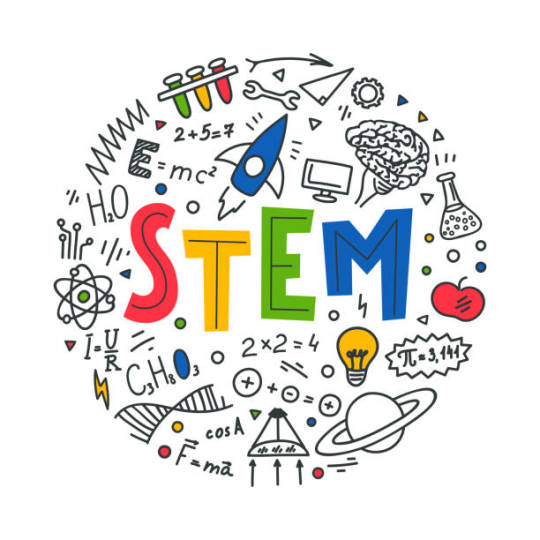
1 note
·
View note
Text
What is STEM?
STEM strand, which stands for Science, Technology, Engineering, and Mathematics, refers to a group of academics that support modern society. These areas are critical for economic growth, scientific advancement, and global competitiveness.
Science, the first component of STEM, investigates the natural world via fields such as physics, chemistry, biology, astronomy, and environmental sciences. Scientists strive to solve the universe's mysteries while pushing the limits of human understanding.
Technology, the practical embodiment of science, is concerned with the knowledge of the creation and improvement of tools, technologies, and systems that improve daily living. Computer science, information technology, software development, and engineering are all vital to technological progress, transforming communication, transportation, healthcare, and other facets of modern life.
The third abbreviation of STEM, which stands for Engineering, is the art of creating, developing, and sustaining systems, structures, and processes that change the world. Engineers are problem solvers who work on heavy issues like sustainable infrastructure and cutting-edge consumer products.
Lastly, Mathematics, the universal language, is the foundation of all STEM areas, offering fundamental skills for modeling and problem-solving. It develops logical thinking and analytical abilities essential for STEM education and professions.
According to some studies, STEM is one of the most significant strands we need because it fosters critical thinking, problem-solving, and analytical abilities while encouraging creativity and innovation. For instance, it enables us to confront modern-day concerns, such as climate change and the global health crisis, that provide the workforce with the skills needed to remain competitive in the labor market and generate economic growth.
Therefore, I conclude STEM education and jobs are the foundation of development in our ever-changing world. They enable us to investigate the natural world, use information for the good of society, build the future, and communicate in a global language. STEM education and jobs are critical in training people to handle the complex problems and possibilities of the twenty-first century, eventually influencing our future.
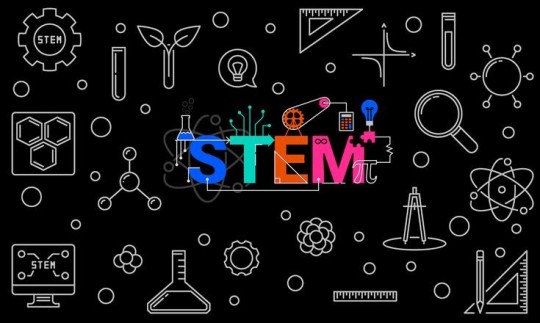
1 note
·
View note
Text
What is STEM?
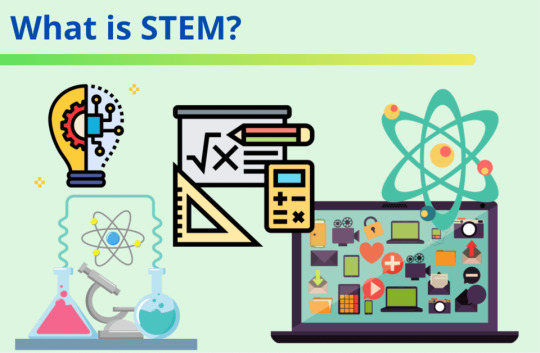
STEM is an acronym for Science, Technology, Engineering, and Mathematics. The STEM acronym was introduced in 2001 by scientific administrators at the U.S. National Science Foundation (NSF).The organization previously used the acronym SMET when referring to the career fields in those disciplines or a curriculum that integrated knowledge and skills from those fields. In 2001, however, American biologist Judith Ramaley, then assistant director of education and human resources at NSF, rearranged the words to form the STEM acronym. Since then, STEM-focused curriculum has been extended to many countries beyond the United States, with programs developed in places such as Australia, China, France, South Korea, Taiwan, and the United Kingdom.

STEM in higher education teaches students to think critically, prepares them for careers and creates professionals that can work across scientific disciplines to solve challenging problems. It also integrates multiple disciplines and trains students to use cross-disciplinary knowledge to solve problems. Moreover, STEM students take a rigorous and varied course load and develop a strong work ethic. In addition, STEM programs promote a learn-by-doing approach. Students participate in real-world projects with real-world consequences. For example, students often participate in university research programs. This approach allows students to learn while also taking an active role in the development of emerging technology and groundbreaking research.

Skills developed by students through STEM provide them with the foundation to succeed at school and beyond. Employer demand for STEM qualifications and skills is high, and will continue to increase in the future. Currently, 75 percent of jobs in the fastest growing industries require workers with STEM skills. To be competitive, the Australian workforce needs people who can adapt to a changing workplace. STEM empowers individuals with the skills to succeed and adapt to this changing world.
Reference:
1 note
·
View note
Text
What is STEM?
STEM refers to a specific academic track or program designed for high school students. STEM stands for Science, Technology, Engineering, and Mathematics. The STEM strand is one of several specialized tracks or strands that students can choose from in their final years of high school. These tracks are designed to help students focus on specific areas of study and prepare them for their future careers or further education.
STEM majors attract people from diverse backgrounds with diverse interests, whether or not they plan on entering highly technical fields. Why? STEM courses usually involve experiential learning (EL) opportunities, projects, and lab sessions. During a STEM course, you can also benefit from an assignment or a project that lets you explore and use your existing problem-solving expertise in the real world.
Source: https://www.aeccglobal.com.ph/blog/stem-strand-courses-jobs-list?fbclid=IwAR2xGszP3sBT4OxpyBIRZUxF_neAfcUnNQAepjtRpBbuIT0HOicU-9MA9G0
The STEM strand curriculum includes a variety of subjects, such as:
▪ Pre Calculus and Basic Calculus
▪ Chemistry
▪ Physics
▪ Biology
▪ Earth Science
▪ Empowerment Technology
▪ DRR
▪ Research Methods
STEM education is important because it prepares students for the jobs of the future. STEM jobs are growing at a faster rate than non-STEM jobs, and they are often high-paying and in-demand. STEM education also helps students develop important skills such as critical thinking, problem-solving, and teamwork.
STEM education and careers are vital for driving innovation, economic growth, and technological advancement in modern society. People with STEM backgrounds often work in a wide range of industries, from healthcare and information technology to aerospace and environmental science. STEM fields are characterized by their emphasis on critical thinking, problem-solving, and the pursuit of knowledge to address real-world challenges. STEM graduates are in high demand in the Philippines, particularly in fields such as Engineering, IT, and Science.
Advantages of Taking STEM in SHS in the Philippines
The STEM strand encompasses many subject matters compared with other SHS strands. Because of this, the students are presented with many concepts and ideas that they can apply to their daily life as well as in their future studies.
Source: https://reedleyschool.edu.ph/blog/overview-of-stem-strand-and-curriculum/
Top STEM Strand Courses & Subjects List
One of the questions that international students often ask is this: What are the courses under STEM strand? Here is a short STEM courses list. But remember, the options to choose from in the academic world are much more.
▪ Computer Science
▪ Biology
▪ Statistics
▪ Biochemistry
▪ Aerospace
▪ Engineering Civil Engineering
▪ Mechanical Engineering Astronomy
▪ Physics
▪ Electrical Engineering Chemistry
▪ Paleontology
Source: https://www.aeccglobal.com.ph/blog/stem-strand-courses-jobs-list?fbclid=IwAR2xGszP3sBT4OxpyBIRZUxF_neAfcUnNQAepjtRpBbuIT0HOicU-9MA9G0
In a STEM strand or program in high school, students engage in a range of activities that encompass classroom instruction in subjects like advanced mathematics, science, technology, and engineering, hands-on experiments, mathematical problem-solving, coding and programming, engineering design projects, research projects, team projects, participation in STEM competitions, field trips to STEM-related facilities, and potential internships or work experiences. These activities aim to provide students with both theoretical knowledge and practical skills, foster critical thinking, problem-solving abilities, and teamwork, and expose them to real-world applications of STEM disciplines. Additionally, students receive guidance for exploring STEM career paths, understanding educational opportunities, and gaining a strong foundation for future success in STEM fields.

Picture: https://pin.it/3V2HV3i
Athea Rheycel Caballereo 11 - Eminence
0 notes
Photo
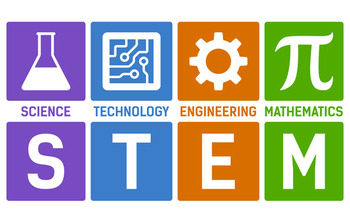
WHAT IS STEM?
STEM is an approach to education where students utilize skills acquired in science and math disciplines to accomplish an engineering problem while using technology. It is an interdisciplinary, blended, applied approach to learning. The general structure of these courses is the acquisition of content knowledge to help solve a real-world, community driven problem following a design process.
BENEFITS OF STEM EDUCATION:
Fosters ingenuity and creativity
Builds resilience
Encourages experimentation
Encourages teamwork
Encourages knowledge application
Encourages tech use
Teaches problem-solving
Encourages adaption
WHY STEM?
If your future profession is to be a Bio Researcher, Mechanical Engineer, Civil Engineer ,Chemical Engineer, Industrial Engineer, Microbiologist, Statistician, Programmer, Software Developer, and Database Administrator, then this is the strand need to pick. Choose STEM!
1 note
·
View note